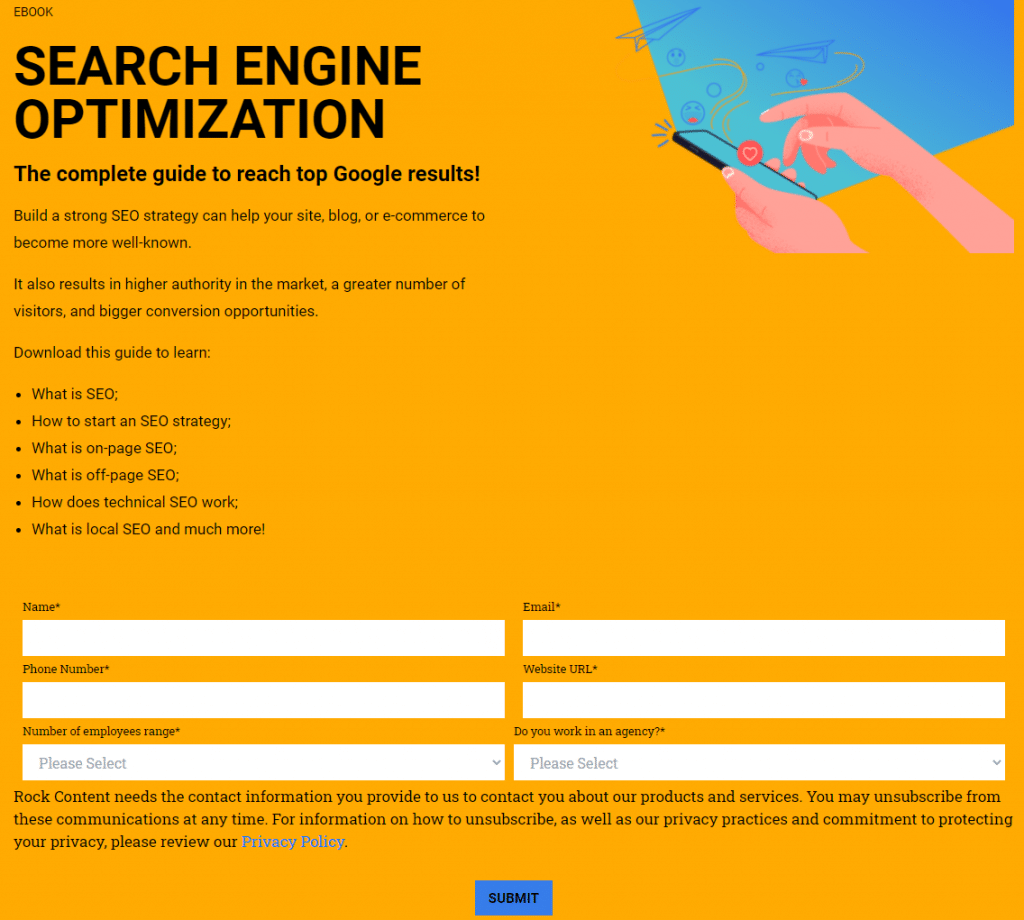We can all agree that digital marketing is an important part of any growth strategy.
But what are you doing to optimize your marketing campaigns and attract more customers?
Unfortunately, this is a common area where a lot of companies struggle.
They simply put out a bunch of ads hoping for the best and never really check to see what is working to improve traction and what isn’t.
Instead, there are certain digital marketing elements you should keep tabs on to ensure overall success.
By focusing on making each marketing channel as tailored to your specific audience and product as possible, you can easily refine your processes and see a boost in your overall results.
In the end, this is an excellent way to consistently create marketing that increases traffic, improves sales, and attracts engaged customers.
Ready to learn how to optimize your marketing campaigns? Let’s get started.
- What is Marketing Optimization?
- Why is Marketing Optimization Important for Businesses?
- How to Optimize Marketing Campaigns
- Wrap Up: Optimizing Marketing Campaigns is Crucial to your Overall Success
Download this post by entering your email below
What is Marketing Optimization?
Before we can fully dive in on how to do it, we have to discuss what marketing optimization actually is.
Marketing optimization is simply the process of tracking each channel your business utilizes and making adjustments based on those results.
While the process really varies depending on the type of digital advertising you’re doing and the overall goal of the campaign, little actions add up when completed over time.
You can really just think of it as a refinement or an attunement to the current market, your target audience, and the channel on which you’re advertising.
The more you change based on the results you’re seeing, the better dialed in your campaigns become over time.
In the end, a proper marketing optimization protocol can mean the difference between making money and losing precious ad spend on advertising that falls flat.
Why is Marketing Optimization Important for Businesses?
The reason marketing optimization is important for businesses is that it ensures that your results are as consistent and positive as possible.
Simply put, once you’ve honed in on what works for your particular niche or industry, you can use that information to scale up.
This means that over time you’ll be able to continue to see better response and increased growth with nearly every single marketing campaign you launch.
And there’s a great side effect, too.
The better you get at marketing optimization for your business, the easier it becomes to deploy new campaigns that are already mostly optimized.
The end result is the ability to consistently attract new leads, customers, and website visitors with minimal effort and maximum effectiveness.
This is what every organization utilizing digital marketing for growth is really looking to do, right?
How to Optimize Marketing Campaigns
Of course, you want to take as many steps as possible to optimize your marketing campaigns.
This can be done in several ways, but the most common focus on the most critical aspects of reaching your ideal customer.
After all, if you can get in front of a customer when they’re looking for the product or service that you provide, then there’s a better chance they’ll make a purchase or take a preferred action.
This means more email list subscribers, more eCommerce shoppers, better traffic, or whatever your company sees as a positive conversion.
The good news is that optimization isn’t particularly hard.
You just have to know what angle to focus on for maximum effect and have a willingness to make periodic changes along the way.
Here are a few especially crucial ones to keep in mind.
1. Really understand your target audience
If you’re looking to truly grow your traffic and fully optimize your marketing campaigns, it is crucial to understand your target audience.
In fact, you want to know your buyer personas so well that you truly get exactly what their needs are and why your product or solution fulfills that gap.
To do this, take time to brainstorm who these people are and why what you’re offering relates to them in some manner.
Map the process out and determine the best channels to reach them and how they might react to a particular marketing campaign.
For example, if your product is ideal for stay-at-home parents of infants, you probably wouldn’t want to target them on LinkedIn.
The more you can boil down who these people are and their overall needs, the greater effect your marketing campaigns will have.
2. Utilize heat maps and A/B tests
Sometimes the nuances between one marketing campaign and another can be incredibly subtle.
A simple difference in text color or a graphic can mean the difference of having a high bounce rate or creating steady conversions.
This is why it is important to track what website visitors are doing by utilizing heat maps and A/B testing.
What are those things?
➤ Heat maps are a handy tool that keep track of where site visitors are looking and clicking on your page.
If you notice they’re stopping at a particular point or leaving the page after reading a block of text, it might be time to make a few adjustments.
➤ A/B tests are simply two versions of the same page deployed to see which one converts better.
Often, a heat map in conjunction with A/B testing can show you where there are any issues.
And this gives you solid insight into where additional optimization might be necessary.
3. Using landing pages
When it comes to digital marketing, far too many companies make the mistake of paying a ton for ads that take traffic straight to the main homepage.
Why is this a problem?
It doesn’t give the visitor a chance to follow the course of action that you want them to take and can make it easier for them to leave without converting.
Instead, it is always a better idea to have a landing page strategy.
What this does is it provides a clearer path to conversion, which makes it easier for the potential customer to take action without having to find out the details themselves.
For optimization, this gives you the ability to hone in on what works on a single landing page associated with a single marketing campaign versus trying to make changes across your whole website.
It’s also better for A/B testing, too.

4. Don’t forget about mobile users
If you aren’t already targeting mobile users with your digital marketing campaigns, then you need to be.
Using little elements like tap-to-call links and pages optimized for the right screen size can make a customer’s user experience much more favorable.
In addition, it is helpful to remember that most people are incredibly impatient.
If a landing page takes too long to load on a smartphone or tablet device, there’s a good chance they’re going to give up quickly and your page abandonment rate is going to skyrocket.
Likewise, sometimes it is a good idea to have specific campaigns dedicated to mobile users.
This allows you to A/B test different concepts, mobile-friendly landing pages, and other elements critical to campaign success.
And remember that those viewing your website on a smartphone device are likely busy.
Make it easy for them to convert by creating clear call-to-action options throughout your entire campaign.
5. Track your analytics
So, what is the key to really optimizing your marketing campaigns and attracting more customers?
Tracking your analytics using Google Analytics.
While there are tons of different tools that do the same thing, the basic one you should always use is GA.
Why? It’s free and a lot more robust than most people tend to believe.
By taking the time to properly set up your tracking, you can create reports with tons of data, making it easier to make adjustments and optimize your campaigns.
Then decide if you need to add in other tracking tools for a greater scope of how well your marketing efforts are working.
Review your reports on a regular basis to determine what is working and what isn’t.
But also remember to give changes an appropriate length of time to show results. Often, what looks like a failure might be a success if given enough space to take hold.
6. Focus on conversions instead of leads
Another crucial aspect of optimizing your marketing campaigns is to focus on overall conversions instead of leads.
To clarify this, you have to remember that not everyone who visits your website is going to be an optimal lead.
In fact, the ratio of traffic versus ultimate paying customers is usually pretty low.
Instead, it is better to focus on conversion instead of how many leads you garner from a specific marketing campaign.
This can be anything including email list sign-ups, white paper downloads, and social media follower growth.
The reason companies need to think in this manner is that tracking only leads or paying customers often leads to a false sense of failure.
In actuality, a campaign can still be widely successful if it increases your ability to grow a specific area of your digital marketing.
Wrap Up: Optimizing Marketing Campaigns is Crucial to your Overall Success
Even if it seems too much work at first.
When you know what is generating results and why, it becomes incredibly easy to make that same thing happen again and again.
The outcome is a better connection to the needs of your target market and an improved ability to scale your most successful campaigns.
Are you looking for ways to grow your number of leads and improve your digital advertising results?
Then you should definitely check our interactive ebook with proven tactics to increase conversions!









